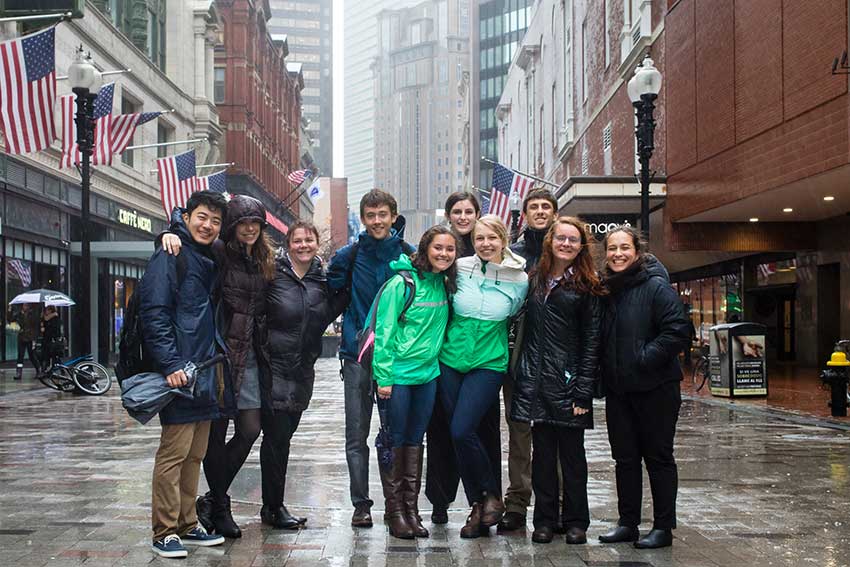
You might say they blew into town. On a day of gale-force winds, hard by Boston’s John Hancock Tower, notorious for its skyscraper-fed wind tunnels, eight Amherst students braved the weather to learn about the climate.
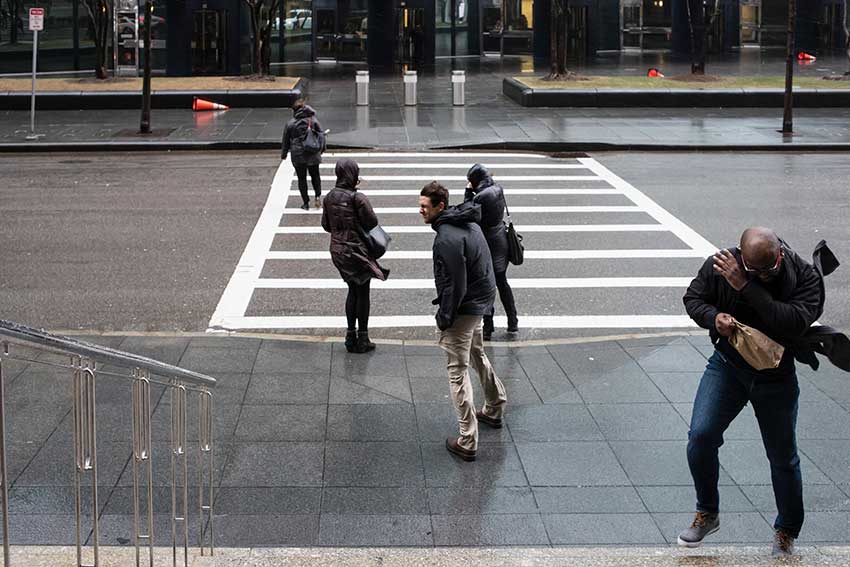
Specifically, they’d come here on the College’s first-ever Climate Action Trek.
Sponsored by the Loeb Center for Career Exploration and Planning, and the Office of Sustainability, the three-day visit was meant to be an immersion experience in the range of climate action jobs.
But who knew the immersion would be literal too? Soaked to the skin, laughing and hanging onto each other to stay upright, trying to keep their hats from whipping off (though Yixin “Arthur” Xiao ’19 helplessly watched his eyeglasses sail out of sight), they made it to their second session of five that day.
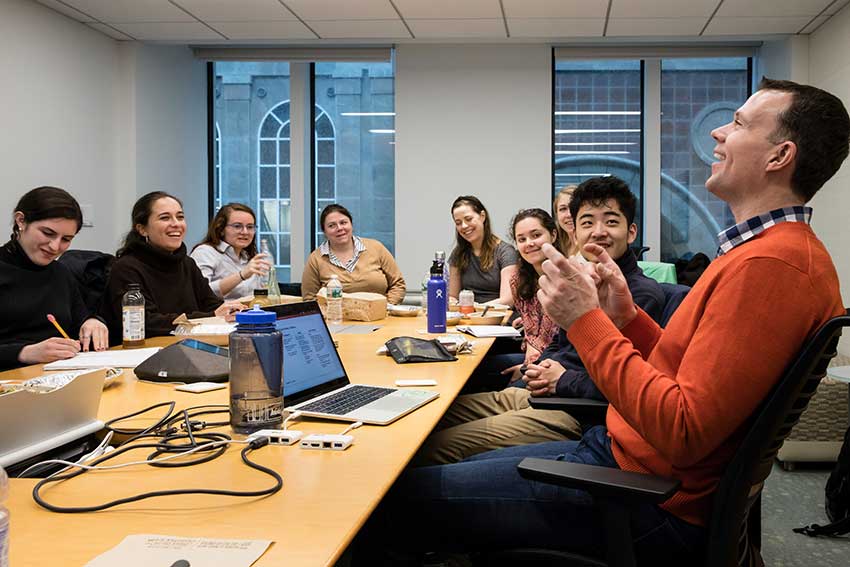
That session was a lunch with Kyle Cahill ’96, the first director of corporate responsibility, which includes sustainability, at John Hancock Life Insurance Co.
Cahill was one of a half-dozen alumni to meet with the students, part of a group of some 20 local innovators who also shared their varied career paths and spoke of the countless vital jobs in this bursting field.
Each contributes to Boston’s rich ecosystem of climate action players, from nonprofits to state agencies, philanthropies to investors, start-ups to advocacy groups, including the Union of Concerned Scientists, which translates complex science into digestible information to drive public campaigns, to the largest clean-tech company incubator in the country (Greentown Labs, of Somerville).
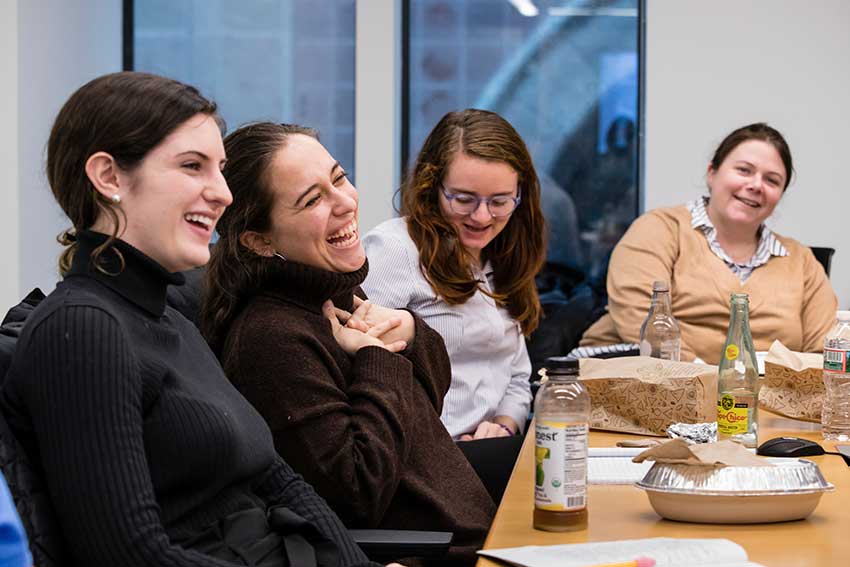
As the students peeled off their coats and dug into their Chipotle takeout, Cahill explained how John Hancock must weigh the risks for insuring around climate change. It has to calculate the health effects of a hotter, wetter climate, for instance, like higher levels of asthma and mosquito-borne illnesses afflicting its policyholders and employees. Then it must also factor climate change effects on its investments in agriculture and timber.
“The goal of my work is to make my job unnecessary,” said Cahill, conceding that the world is a long way off from solving the climate change crisis. He noted that positions like his are proliferating as more institutions prioritize sustainability. Indeed, the trek was led by the College’s director of sustainability (Laura Draucker) plus Emily Griffen, director of the Loeb Center.
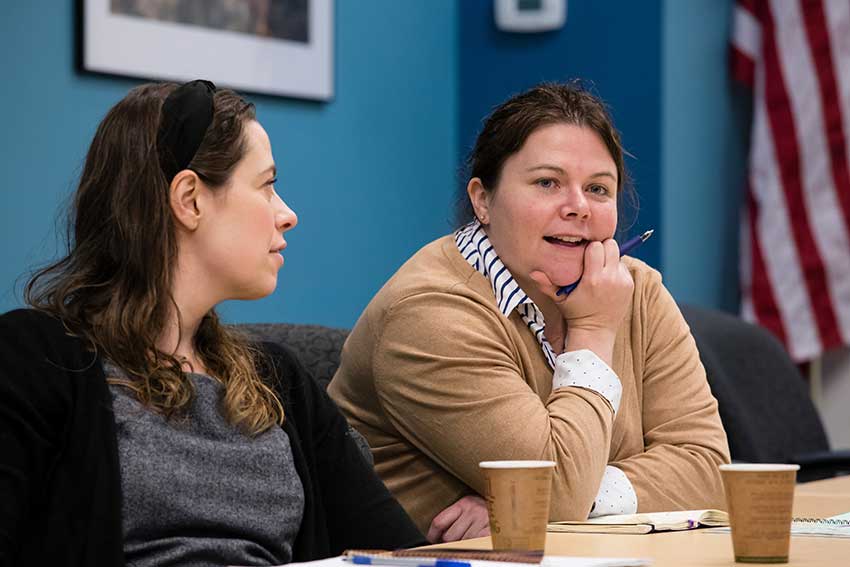
Throughout the trek, the students—six environmental science majors (some doubling in another discipline) and two physics majors—began to connect the dots on why Boston is at the forefront of climate action. In fact, the Commonwealth has been named the most energy efficient state in the U.S. for each of the last eight years.
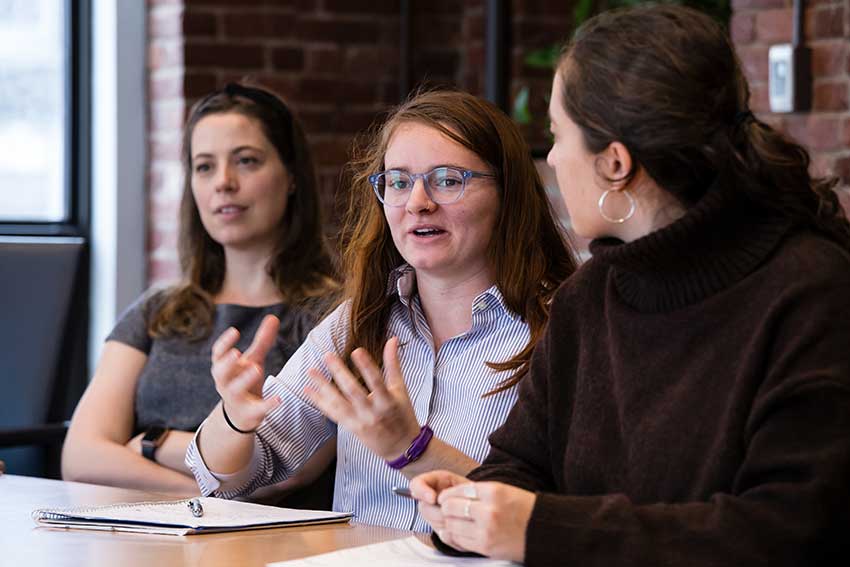
That morning they’d visited the waterfront offices of the Barr Foundation and met with two climate program staffers who grant funds to a strategic array of groups. The foundation was started by Amos Hostetter ’58, former chair of Amherst’s board of trustees, and his wife, Barbara W. Hostetter.
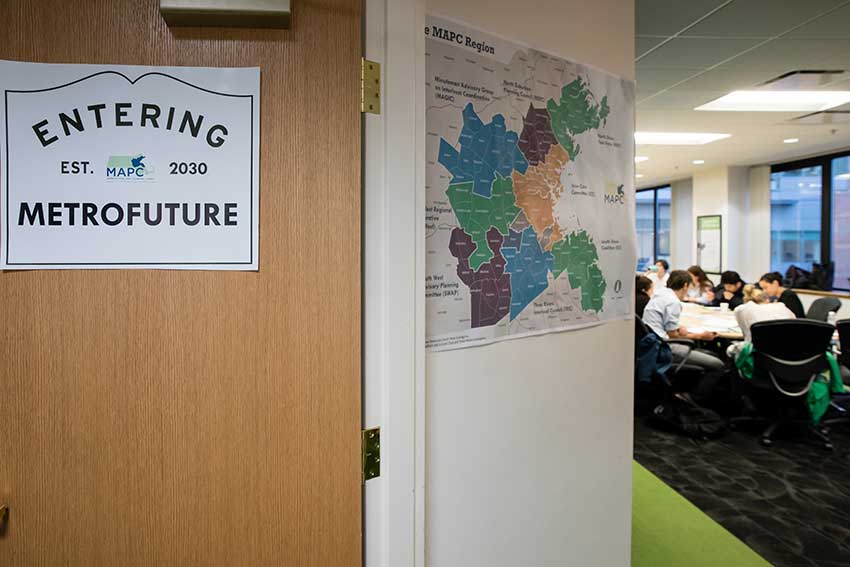
One of the Barr’s grantees is the local Metropolitan Area Planning Council (MAPC), which consults with 101 municipalities in eastern Massachusetts. Sloshing off the T at Downtown Crossing, the group headed up to a MAPC conference room marked with the faux town sign “Metrofuture, Est. 2030.” (The state has pledged to reduce carbon emissions in stages, hitting an 80 percent reduction by 2050. The College has pledged to achieve carbon neutrality by 2030.)

The MAPC works on many fronts, such as pushing for sustainability changes in building codes and vetting solar power vendors. The hosts, including Nicole Sanches ’13, began by asking the students where they might focus their careers. Environmental journalism, said Kiera Alventosa ’21. Climate justice, said Nicole Vandal ’21 and Olivia Geiger ’21. Renewable energy, said Joe Palmo ’21. Public policy, said Witter Swanson ’21. Technological solutions, said Arthur Xiao ’19 and Rebecca Novick ’21.
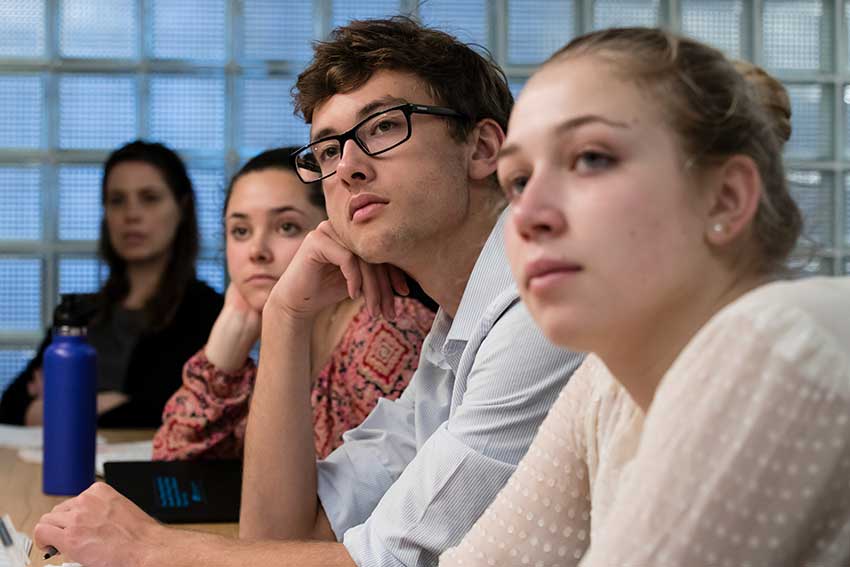
The hosts also asked the students to write or draw their climate action hopes for their own hometowns. Allison Tennant ’19 sketched different crop fields for Loves Park, Ill., “so it’s not just a monoculture of corn.” Alventosa wished for more resilient buildings, because Setauket, N.Y. was hit so hard by Hurricane Sandy.
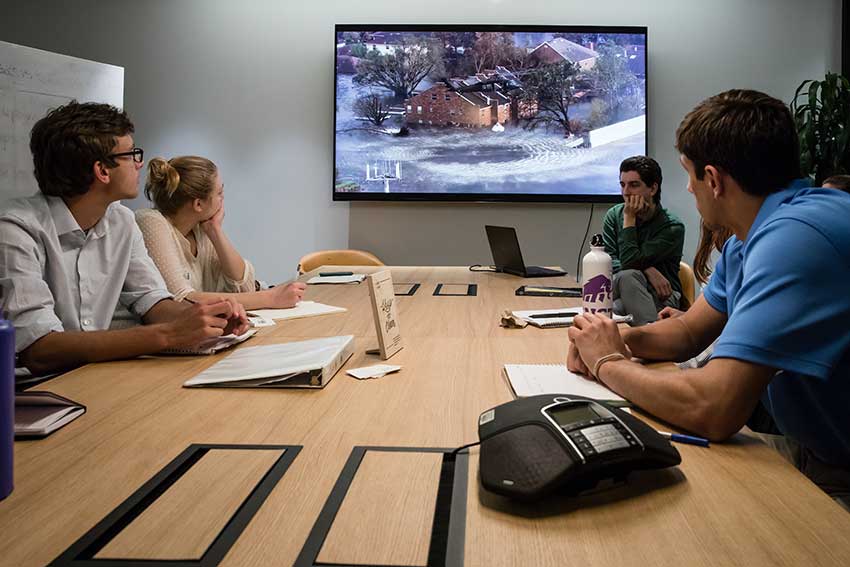
Another dot connected: That day, the students also learned that Boston was galvanized to create a climate preparedness plan after Sandy, realizing it was just luck that landfall avoided the Bay State—that time.
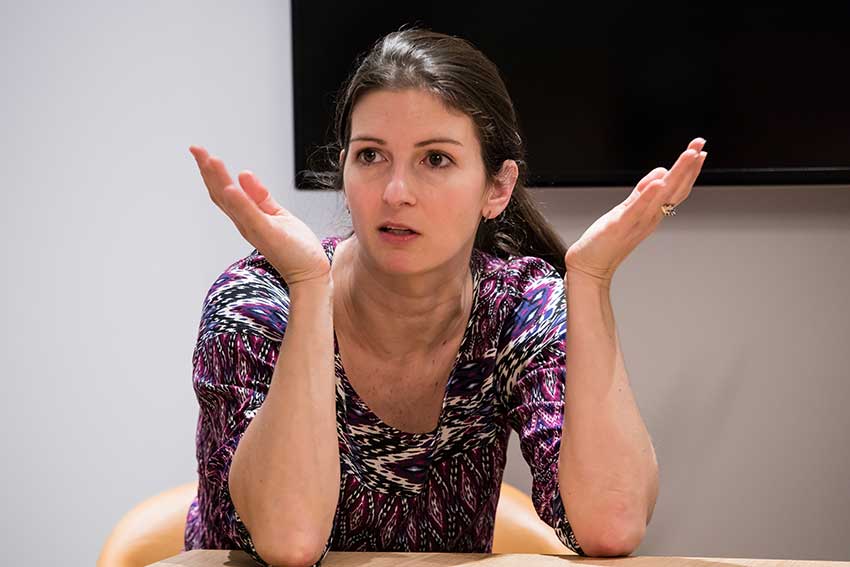
Later in the day, at the Conservation Law Foundation, the group was held rapt by litigator Heather Govern ’02. The CLF, founded by Brad Campbell ’83, is one of many organizations now scrambling to fill in for the hobbled EPA—the agency’s caseload has decreased dramatically under the Trump Administration. To that end, the CLF goes after those who violate the Clean Air, Clean Water and Endangered Species acts. Govern chronicled how the CLF has sued Exxon for dumping oil near Chelsea, Mass., for instance.
The day’s last stop was the most relevant to the group: the Massachusetts Clean Energy Center (MassCEC), which helps match students to internships at some 100 clean energy startups. Joe Palmo ’21 immediately thought of applying for a spot.

The next afternoon, after the sun finally slouched forth, the trekkers encountered many of those MassCEC-linked startups at Greentown Labs. They toured this 100,000-square-foot facility, donning goggles on its giant prototyping floor crowded with fledgling climate action products. Two entrepreneurs even pitched them on their inventions: an edible biomaterial that extends the shelf life of food, and nanofiltration membranes for wastewater.
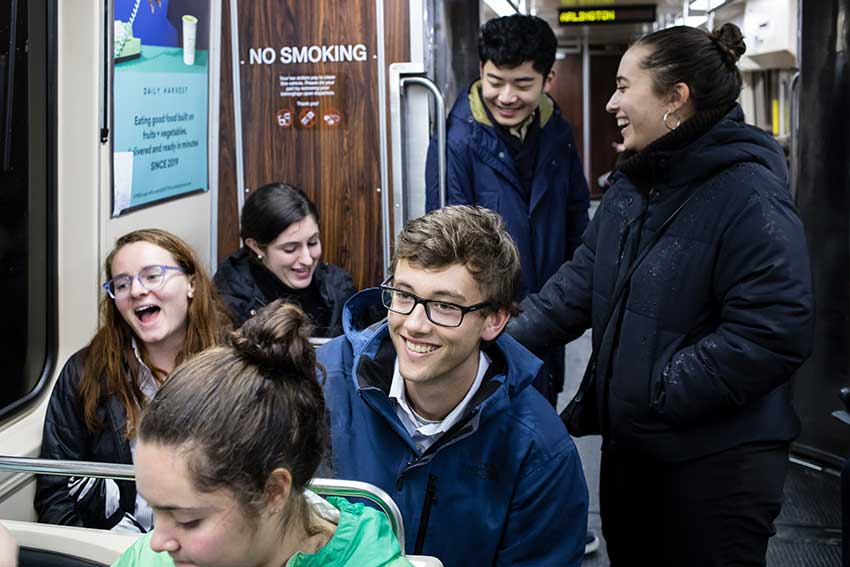
As the trek ended, the students were full of possibilities for themselves—and the world. Because everywhere they’d been, there were winds of change.